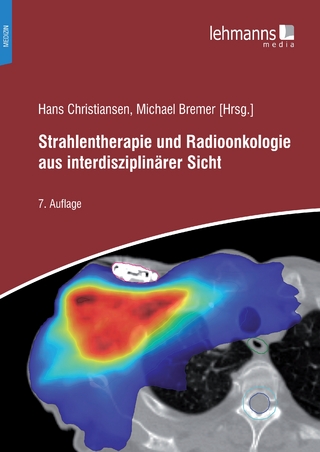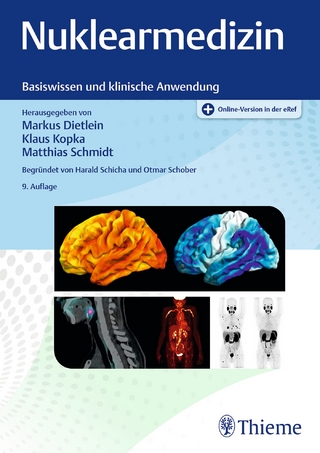
Digital Radiography
Kluwer Academic / Plenum Publishers (Verlag)
978-0-306-42188-4 (ISBN)
- Titel ist leider vergriffen;
keine Neuauflage - Artikel merken
Orton Detroit, Michigan ix Contents 1. DIGITAL RADIOGRAPHY: OVERVIEW B. A. Arnold, 1. G. Kereiakes, and S. R. Thomas 1. Introduction ...1 2. Point-Scanned Detector Systems 3 3. Line-Scanned Detector Systems 4 4. Area Detector Systems 5 4.1. Stimulable Phosphors 5 4.2. Selenium Detectors .
1. Digital Radiography: Overview.- 1. Introduction.- 2. Point-Scanned Detector Systems.- 3. Line-Scanned Detector Systems.- 4. Area Detector Systems.- 4.1. Stimulable Phosphors.- 4.2. Selenium Detectors.- 4.3. Digital Video Systems.- 5. Comparison of X-Ray Imaging Systems.- 6. Summary.- References.- 2. Image Processors for Digital Angiography: Algorithms and Architectures.- 1. Introduction.- 2. Algorithms for Handling and Processing of Digitized Angiograms.- 2.1. Image Data Compression.- 2.2. Image Enhancement by Digital Subtraction.- 2.3. Image Enhancement and Extraction by Digital Filtering of Pixeldensograms.- 2.4. Image Analysis.- 2.5. Algorithm Structures.- 2.5.1. Point Operations.- 2.5.2. Filtering of Pixeldensograms.- 2.5.3. Two-Dimensional Processing.- 2.6. Data Structure.- 3. Processor Architectures for Digital Angiography.- 3.1. General-Purpose Computer with Video Interface.- 3.2. Special-Purpose Processors for Real-Time Subtraction.- 3.3. Special Computer Systems for Digital Angiography.- 3.4. Experimental Systems for Digital Angiography.- 4. Conclusions and Discussion.- References.- 3. Temporal Integration Processing Techniques.- 1. Introduction.- 2. Theory.- 2.1. The Conventional DSA Reference.- 2.2. Temporal Integration.- 2.3. Matched Filtering.- 3. Implementation.- 4. Applications.- 4.1. SNR Improvement.- 4.2. X-Ray Exposure Reduction.- 4.3. Contrast Dose Reduction.- 4.4. Hybrid Subtraction SNR Recovery.- 5. Discussion.- References.- 4. Noise Analysis in Digital Radiography.- 1. Introduction.- 2. Sources of Noise in Digital Systems.- 3. Conspicuity and Image Subtraction.- 4. Theoretical Analysis.- 4.1. Detail SNR.- 4.2. Detectability Threshold and Image Gray Levels.- 4.3. Contrast-Detail Relationship for Threshold Detectability.- 4.4. Detector Quantum Efficiency.- 4.5. Minimum Patient Exposure for Detection.- 4.6. Sample Calculations for Digital Angiography.- 4.7. Summary of Theoretical Analysis.- 5. Experimental Measurements of Noise.- 5.1. SNR.- 5.2. Scattered Radiation and Detail SNR.- 5.3. Wiener Power Spectra.- 5.4. Phantom Tests of Iodine Detectability.- 6. Summary.- References.- 5. Quantitative Aspects of Image Intensifier-Television-Based Digital X-Ray Imaging.- 1. Introduction.- 2. System Description.- 2.1. X-Ray Generator and Tube.- 2.2. Object.- 2.3. Image Intensifier.- 2.4. Television Camera.- 2.5. Analog-to-Digital Converter.- 2.6. Image Acquisition Memory.- 2.7. Measurement of System Response.- 2.7.1. TV Camera Response.- 2.7.2. II-TV Response.- 2.8. System Spatial Resolution.- 3. Characterization of Physical Degradation Factors.- 3.1. Beam Hardening.- 3.2. X-Ray Scatter.- 3.3. Veiling Glare.- 4. Effect of Degradation Factors on Videodensitometric Volume Measurements.- 4.1. Absolute Volume Measurements.- 4.2. Relative Volume Measurements.- 5. Techniques for Reduction of Degradation Factors.- 5.1. Veiling Glare.- 5.1.1. Deconvolution of Lead Disk Images.- 5.1.2. Effects of Glare Deconvolution on Volume Measurements.- 5.2. X-Ray Scatter.- 5.3. Beam Hardening.- 6. Applications.- 6.1. Relative Volume Measurements.- 6.1.1. Measurement of Ventricular Ejection Fraction.- 6.1.2. Stenosis Measurement.- 6.2. Absolute Volume Measurements.- 7. Summary.- References.- 6. Recursive Filtering Techniques Applied to Digital Subtraction Angiography.- 1. Introduction.- 2. Temporal Filtering Theory.- 3. Noncardiac Clinical Results Using Recursive Filtering.- 4. Cardiac Applications.- References.- 7. Energy-Selective Radiography: A Review.- 1. Introduction.- 2. Apparatus for Energy-Selective Imaging.- 3. Decomposition of the Attenuation Coefficient.- 3.1. Intuitive Limits to Dimensionality.- 3.2. The Singular Value Decomposition.- 4. Conditions for Calculating Complete Energy-Dependent Information.- 4.1. Vector Space Descriptions of Mixtures and Line Integrals.- 4.2. Calculation of Line Integrals in Conventional Radiographic Systems.- 4.3. Complete Information Extraction in Energy-Selective Systems.- 5. Applications of Energy-Selective Imaging.- 5.1. Synthesized Monoenergetic Images.- 5.2. Selective Material Images.- 5.3. Generalized Projection Signal Processing.- 5.4. Computation for Energy-Selective Imaging.- 6. Analysis of Conspicuity and Noise.- 6.1. Statistics of Basis Coefficient Estimation.- 6.2. Basis Noise and the System's Physical Properties.- 6.3. Noise Optimal Generalized Projections.- 6.4. Comparison of Noise in Conventional and Energy-Selective Systems.- 6.5. Conspicuity Enhancement.- 7. Conclusion.- References.
| Erscheint lt. Verlag | 31.5.1986 |
|---|---|
| Zusatzinfo | biography |
| Verlagsort | Dordrecht |
| Sprache | englisch |
| Themenwelt | Medizinische Fachgebiete ► Radiologie / Bildgebende Verfahren ► Nuklearmedizin |
| ISBN-10 | 0-306-42188-7 / 0306421887 |
| ISBN-13 | 978-0-306-42188-4 / 9780306421884 |
| Zustand | Neuware |
| Haben Sie eine Frage zum Produkt? |
aus dem Bereich


